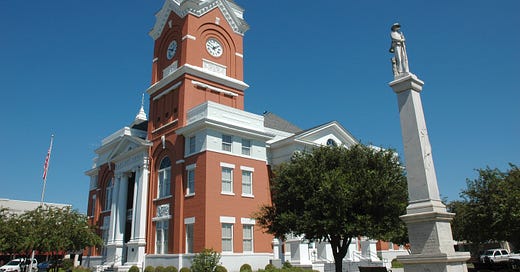The Confederacy's Daughters Dance In Our Heads (1)
ANNETTE TELLS TALES Myth-Making That Has Blighted Lives for Over a Century. Part 1.
This tale begins with a story about a statue in a small town in Georgia.
If you think you already know where this is going, sit comfortably, and prepare to be surprised.
Mostly, I’m writing, as I norma…



